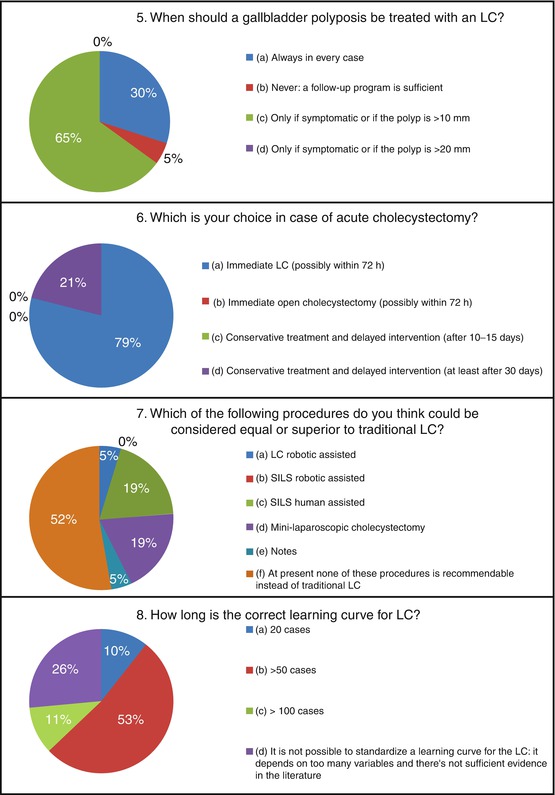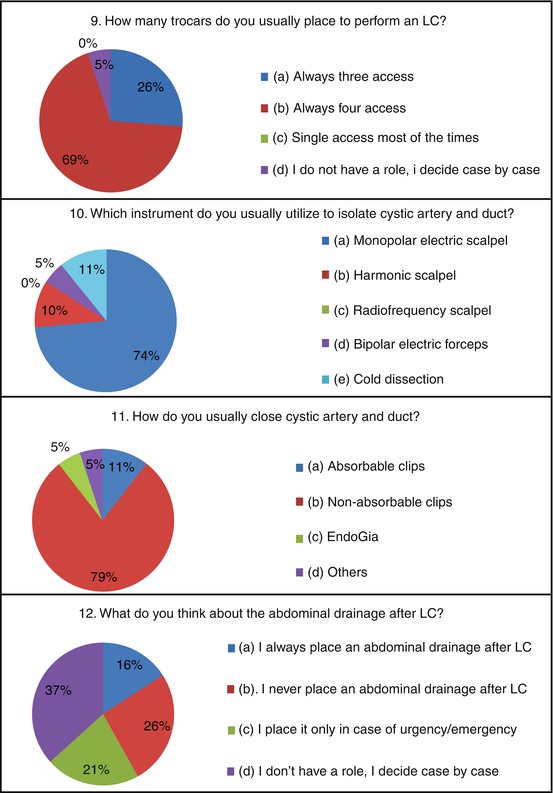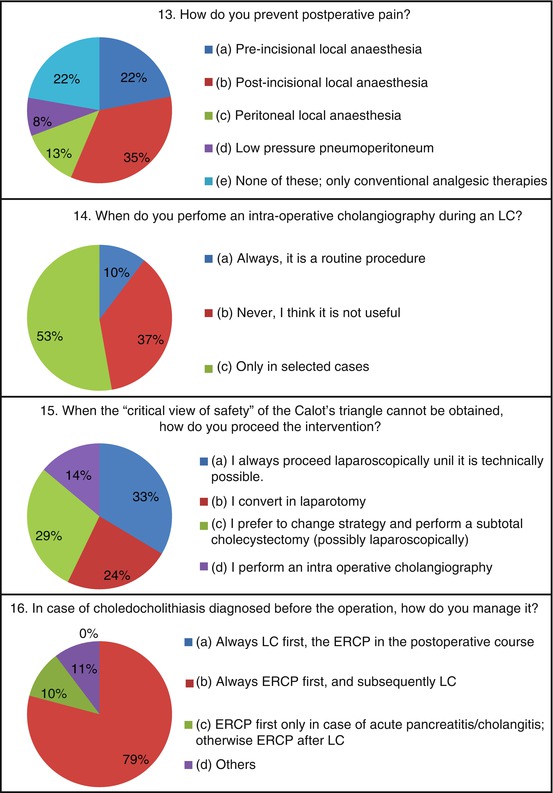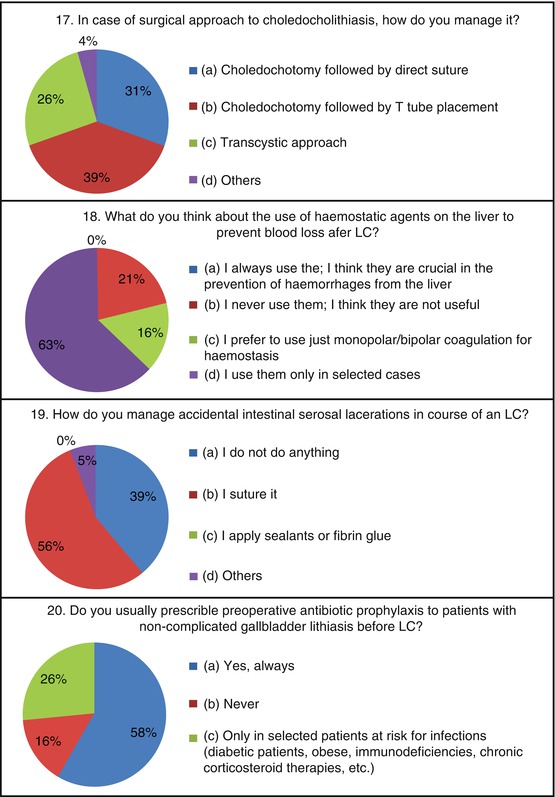Fig. 12.1
Countries of origin of the authors who have joined our audits
12.3 Expert’s Opinion
The authors’ responses were collected and analyzed; a pie chart was produced for each topic expressing the percentage of adhesion of the experts to the multiple-choice answers. Finally a statement expressing the answer shared by the majority of experts was drawn up. Again, it should be emphasized that limitations in resources, and local health system policies often oblige the surgeon to constrained choices independently from their convictions, so that the reported answers (Fig. 12.2) are expression of the expert’s personal opinion and do not represent their current surgical practice. Comparing the responses of experts with statements issued from the present work, an evident alignment on many of the topics does emerge. Nevertheless regarding some issues, a discrepancy of views is evident. Among these is the management of cholelithiasis in pregnancy, where international experts favor a conservative attitude as much as possible conversely to current evidence which supports an early elective laparoscopic cholecystectomy regardless of trimester of pregnancy.










Fig. 12.2
Cumulative answers of the 19 authors to the 20 multiple-choice questions
Even the number of trocars to use routinely in the laparoscopic cholecystectomy is a matter of discussion. Sixty-nine percent of international experts prefer four accesses differing from what emerges from the scientific literature (three-port technique has similar outcomes than conventional four-port technique – grade of recommendation strong). Finally, the use of abdominal drainage after laparoscopic cholecystectomy: scientific evidences strongly recommend not to place it; however, only 26 % of international experts is in line with this attitude.
Stay updated, free articles. Join our Telegram channel

Full access? Get Clinical Tree






